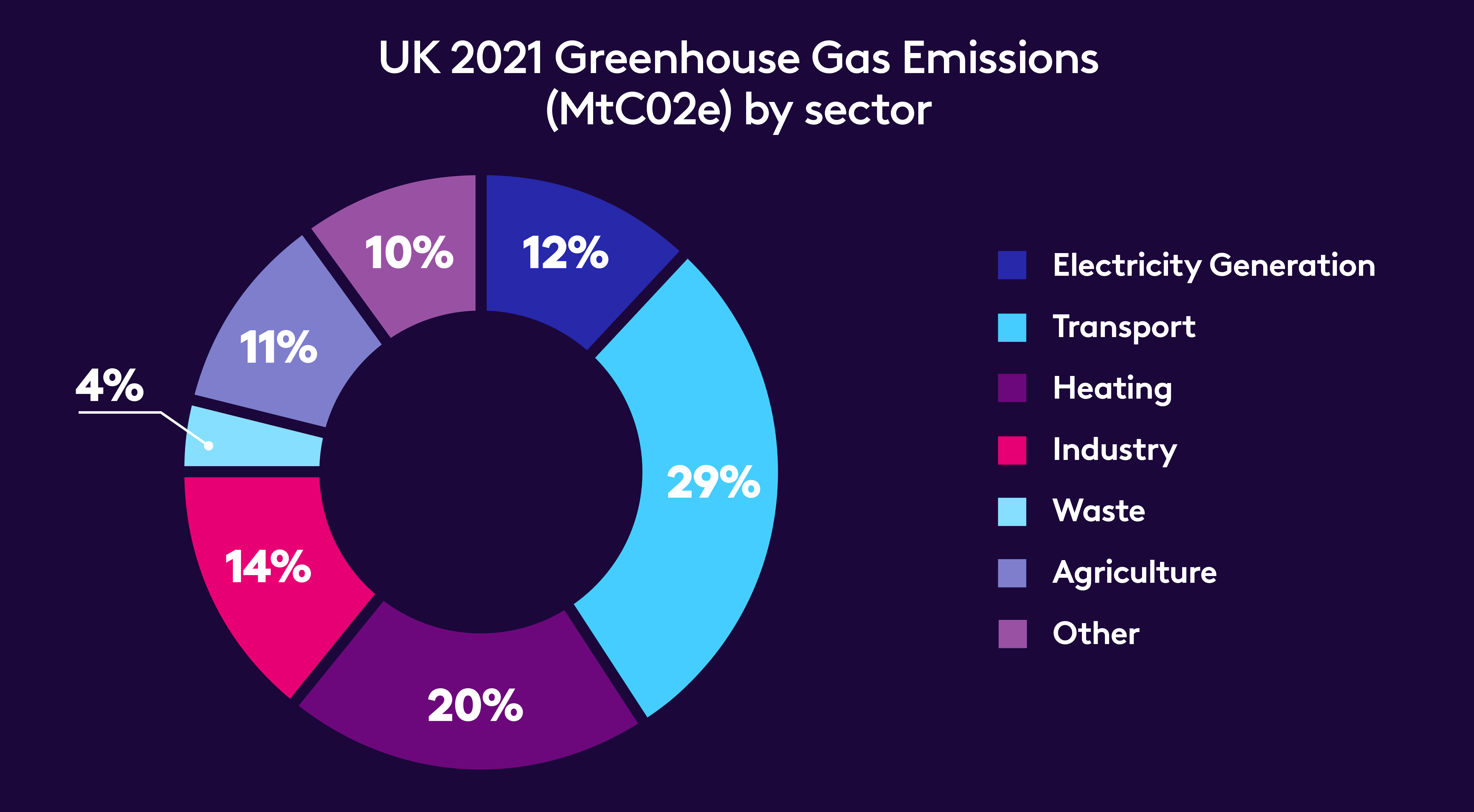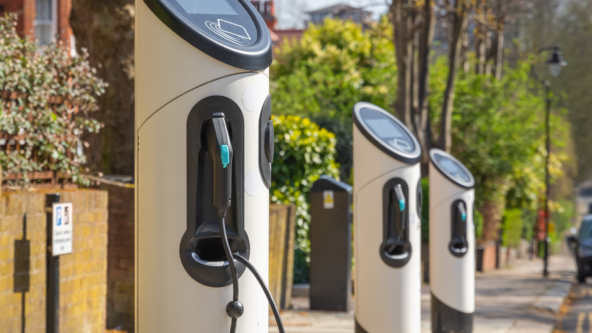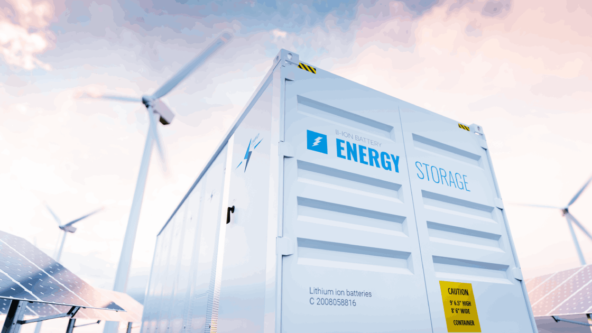As we look back at 2023, now is a good time to take stock of what the UK infrastructure sector has achieved in the transition to net zero, and what remains to be done as we look to the year ahead.
In the UK, and indeed globally, we have made a good start with renewables – notably wind, solar and biomass. Renewables now account for over 40% of UK electricity generation versus only 6.5% in 20101. This is set to grow to over 80% by 2050 according to National Grid projections.2
However, renewables alone will not solve the energy transition. Currently only 12% of the UK’s greenhouse gas emissions come from generating electricity3. The bulk of our remaining 88% of emissions come from the heating, industrial and transport sectors – which are powered by oil and gas. The path to decarbonising these sectors will clearly involve renewable electricity – powering the electric vehicles on our roads and the heat pumps in our homes. But it will also require a new wave of infrastructure to support decarbonisation and to increase energy efficiency – from energy storage and EV charging networks, to district heating schemes and recycling plants. Overall, it is estimated that the UK alone will need over £50bn of private infrastructure investment per year to reach net zero by 2050.4

Source: National Grid.
This new wave of sustainable infrastructure is often technologically proven, but faces a funding gap – it is too capital-intensive for venture capital firms (who often focus on software and tech investments), but too early-stage for traditional infrastructure funds (who typically invest in more mature sectors). We saw this same funding gap in renewable energy 15 years ago when we first invested in the solar developer Lightsource, now Lightsource BP.
As the renewables sector has matured and returns have compressed, the new wave of sustainable infrastructure is now grabbing the attention of forward-looking investors. These investors are looking to invest early in emerging sectors that will become the core infrastructure of the future. Below we provide some insights into four such sectors we think are particularly promising and where we expect to see progress made within 2024:
Future Mobility: EV Charging
Transport is the UK’s most carbon-intensive sector, accounting for 29% of the UK’s GHG emissions. Electrification will play a leading role in decarbonising the transport sector. To support the transition to electric vehicles, the UK will need to increase the number of public chargers from c. 50,000 today to 300,000 by 2030 – a 6-fold increase5. Earning strong financial returns on these EV chargers fundamentally relies on picking good locations where the chargers will get used frequently. This creates a significant first-mover advantage for early investors in the sector.
Energy Transition: Long Duration Storage
As wind and solar energy make up a higher proportion of our electricity, we will increasingly need to rely on energy storage to soak up energy when it is sunny or windy, and dispatch it when it isn’t. According to Aurora Energy projections, UK storage capacity will need to increase by up to 10-fold by 2035 if the UK is to hit net zero.6 Lithium-ion batteries have emerged as the leading technology for short-duration (<4 hour) storage, but they will likely be too expensive to store electricity for long, extended periods of low wind and sun. We are increasingly looking at cheaper technologies for long-duration storage, for example thermal storage infrastructure where electricity is stored in the form of heat.
Digital Infrastructure: Liquid Cooling
Digital infrastructure will be critical in achieving energy efficiency as our homes, businesses and energy systems increasingly become internet-connected. Datacentres are the physical backbone of the internet – physical buildings filled with servers where our data is stored, processed and computed. Currently, datacentres make up 1% of the UK’s electricity demand – but datacentre electricity consumption is set to increase 10-fold by 2050 as our use of data increases.7 Ensuring the energy-efficiency of these datacentres is a win-win both environmentally and financially – with electricity accounting for over half the operating costs of a traditional datacentre.8 For example, using liquid-cooling technologies to cool down the servers in a datacentre can reduce energy consumption (and bills) by up to 50%9 versus traditional air-cooling datacentres.
Circular Economy: Plastic Recycling
The circular economy is important both in minimising emissions from the production of new materials, and in avoiding harmful waste. We see significant growth in various circular economy sectors including circular building materials, upcycling of used vehicles, and recycling of plastic waste. In plastics for example, the British Plastics Federation estimates that the UK currently recycles around 16% of its plastic waste, but this could more than triple to 57% by 2030. This will rely on the rollout of plastic recycling infrastructure to recycle both rigid (typically easier to recycle) and flexible (typically harder to recycle) plastics from various waste streams.
We are keen to hear from any businesses, investors, think tanks or public sector institutions interested in working together to support the rollout of sustainable infrastructure both in the UK and globally. Please do get in touch via the form below.
Authors
Sean McLachlan, Sustainable Infrastructure Senior Investment Director
Michael Blake, Sustainable Infrastructure Investment Manager
Get in touch with us
1 Renewable Energy Foundation – Renewables Output in 2010
2 National Energy System Operator
4 National Infrastructure Commission – The Second National Infrastructure Assessment
5 Zap Map – EV charging statistics 2024
6 Aurora Energy Research – Long duration electricity storage in GB
8 BLS Strategies – Energy Services Power Requirements, Energy Costs, and Incentives for Data Centers
9 RBC – Liquid Cooling Offers Solutions for Next-Generation Datacenters



